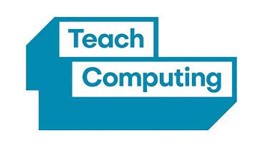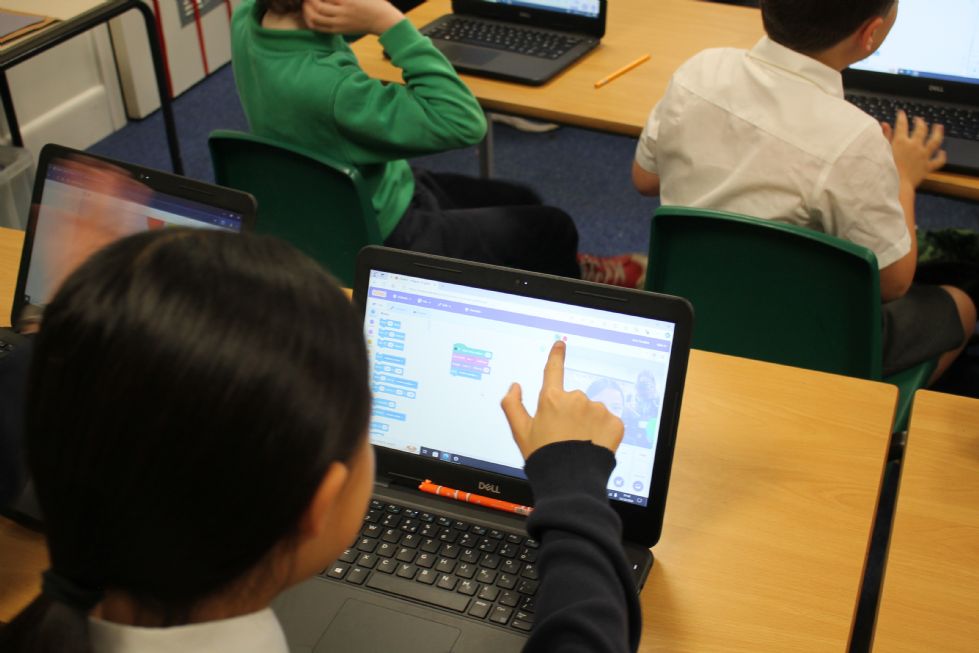Computing
Intent
We strive for all children to develop a strong, flexible knowledge of computational thinking so they can better understand the ever-changing world of technology. Using the Teach Computing scheme as a structure, teaching is planned to create deep links across the curriculum, through units on: systems and networks; creating media; data and information; programming. From their entry to school in Reception to when they leave in Year 6, our approach to Computing ensures that pupils become digitally literate in order to embrace the digital world we live in today.
Implementation
As a school we follow the Teach computing scheme of work, where learning is sequenced to develop mastery of skills and knowledge, and combined with enrichment opportunities such as cross-curricular opportunities with physical computing resources. We ensure children develop resilience and investigative skills to develop their computational thinking skills by following taught processes.
This scheme was chosen as it has been created by subject experts and based on the latest pedagogical research. It provides an innovative progression framework where computing content (concepts, knowledge, skills and objectives) has been organised into interconnected networks called learning graphs. The curriculum aims to equip young people with the knowledge, skills and understanding they need to thrive in the digital world of today and the future. The curriculum can be broken down into three strands: computer science, information technology and digital literacy, with the aims of the curriculum reflecting this distinction.

Computing Strands
Computer Science
- Design, write and debug programs that accomplish specific goals, solve problems by decomposing them into smaller parts.
- Use logical reasoning to explain how some simple algorithms work and to detect and correct errors in algorithms and programs.
- Understand computer networks including the internet; how they can provide multiple services.
- Use sequence, selection, and repetition in programs; work with variables and various forms of input and output.
Digital Literacy
-
Use technology safely, respectfully and responsibly; recognise acceptable/unacceptable behaviour; identify a range of ways to report concerns about content and contact.
-
Use search technologies effectively, appreciate how results are selected and ranked, and be discerning in evaluating digital content.
Information Technology
- Select, use and combine a variety of software (including internet services) on a range of digital devices to design and create a range of programs, systems and content that accomplish given goals, including collecting, analysing, evaluating and presenting data and information.
Challenge
Using the three computing strands, children develop their computing skills when working on the curriculum so that every learner feels appropriately challenged. Children develop their fluency and accuracy in touch-typing and are taught valuable keyboard skills and shortcuts to ensure efficiency. Programming across the year groups allows progression of skills and ensures for problem solving, resilience and an ability to ‘think outside the box’ during debugging.
Encouraging computational thinking allows children to work through fluency tasks to practise their skills, consolidate their learning and apply the skills in a wider context. Fast-paced lessons in these small steps ensure children can work at their own pace through challenges.
Impact
By the time they leave St Edmund's, children will have gained key knowledge and skills in the three main areas of the computing curriculum: computer science (programming and understanding how digital systems work), information technology (using computer systems to store, retrieve and send information) and digital literacy (evaluating digital content and using technology safely and respectfully). We want our children to be confident with the language around computing and to apply it to develop clarity in their communication. Through specific knowledge organisers, key vocabulary is identified and taught to children to support them in successfully accessing and deepening their knowledge of the computing curriculum. The objectives within each strand support the development of learning across the key stages and EYFS, ensuring a solid grounding for future learning and beyond.
Children at St Edmund's Catholic Primary School will:
- have evidence of work showing a range of topics covered, cross curriculum links and work adapted to their individual needs
- be confident users of technology, able to use it to accomplish a wide variety of goals, both at home and in school
- have a secure and comprehensive knowledge of the implications of technology and digital systems. This is important in a society where technologies and trends are rapidly evolving
- be able to apply the British values of democracy, tolerance, mutual respect, rule of law and liberty when using digital system.
STEM
As a teaching staff, we strive to provide children with the opportunity to use physical computing resources such as: Beebots, Microbits and Data loggers. We provide extra-curricular clubs which give children the opportunity to develop their coding skills and develop their problem-solving skills and create their own piece of digital media.
E-safety
E-Safety is crucial to our curriculum. From Foundation Stage to Year 6 children regularly receive lessons in online-safety as well as termly assemblies. Online-safety is embedded in our school life.
Each year, we hold an Internet Safety Day and we invite the Brec Foundation in to deliver a presentation to the children on staying safe online. They also hold training for our parents and carers to support them to keep their children safe online.
. We understand that because of the digital world we live in, we must do all we can to promote the importance of safety on the Internet for all learners at St Polycarp’s
Useful Links:
- Computing Glossary
- Curriculum computing
- Safer Internet
- BBC Bitesize
- Code
- Scratch
- Think u know
- Childnet Resources

